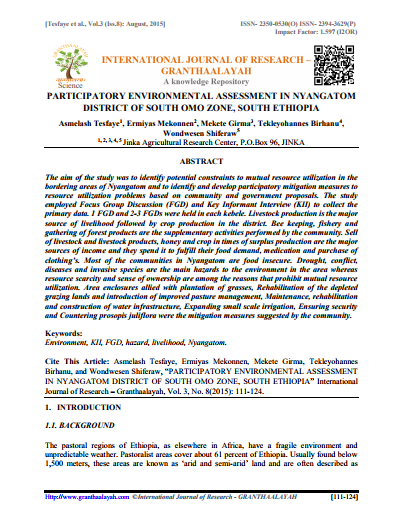Resource information
The aim of the study was to identify potential constraints to mutual resource utilization in the bordering areas of Nyangatom and to identify and develop participatory mitigation measures to resource utilization problems based on community and government proposals. The study employed Focus Group Discussion (FGD) and Key Informant Interview (KII) to collect the primary data. 1 FGD and 2-3 FGDs were held in each kebele. Livestock production is the major source of livelihood followed by crop production in the district. Bee keeping, fishery and gathering of forest products are the supplementary activities performed by the community. Sell of livestock and livestock products, honey and crop in times of surplus production are the major sources of income and they spend it to fulfill their food demand, medication and purchase of clothing’s. Most of the communities in Nyangatom are food insecure. Drought, conflict, diseases and invasive species are the main hazards to the environment in the area whereas resource scarcity and sense of ownership are among the reasons that prohibit mutual resource utilization. Area enclosures allied with plantation of grasses, Rehabilitation of the depleted grazing lands and introduction of improved pasture management, Maintenance, rehabilitation and construction of water infrastructure, Expanding small scale irrigation, Ensuring security and Countering prosopis juliflora were the mitigation measures suggested by the community.



